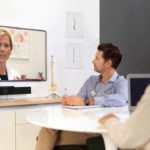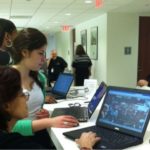Remote Usability Testing
In a scenario where usability evaluators, developers and prospective users are located in different countries and time zones, conducting a traditional lab usability evaluation creates challenges both from the cost and logistical perspectives. These concerns led to research on remote usability evaluation, with the user and the evaluators separated over space and time. Remote testing, which facilitates evaluations being done in the context of the user’s other tasks and technology, can be either synchronous or asynchronous. The former involves real time one-on-one communication between the evaluator and the user, while the latter involves the evaluator and user working separately. Numerous tools are available to address the needs of both these approaches.
Synchronous usability testing methodologies involve video conferencing or employ remote application sharing tools such as WebEx. WebEx and GoToMeeting are the most commonly used technologies to conduct a synchronous remote usability test. However, synchronous remote testing may lack the immediacy and sense of “presence” desired to support a collaborative testing process. Moreover, managing inter-personal dynamics across cultural and linguistic barriers may require approaches sensitive to the cultures involved. Other disadvantages include having reduced control over the testing environment and the distractions and interruptions experienced by the participants’ in their native environment. One of the newer methods developed for conducting a synchronous remote usability test is by using virtual worlds.
Asynchronous methodologies include automatic collection of user’s click streams, user logs of critical incidents that occur while interacting with the application and subjective feedback on the interface by users. Similar to an in-lab study, an asynchronous remote usability test is task-based and the platform allows researchers to capture clicks and task times. Hence, for many large companies, this allows researchers to better understand visitors’ intents when visiting a website or mobile site. Additionally, this style of user testing also provides an opportunity to segment feedback by demographic, attitudinal and behavioral type. The tests are carried out in the user’s own environment (rather than labs) helping further simulate real-life scenario testing. This approach also provides a vehicle to easily solicit feedback from users in remote areas quickly and with lower organizational overheads. In recent years, conducting usability testing asynchronously has also become prevalent and allows testers to provide feedback in their free time and from the comfort of their own home.


 Previous Post
Previous Post Next Post
Next Post